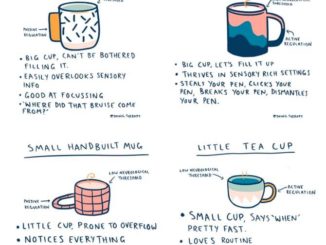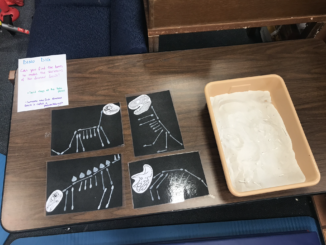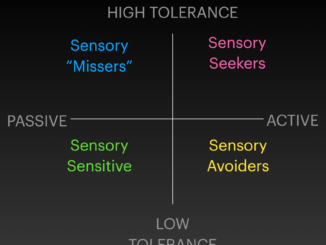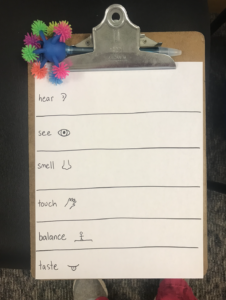
I did this activity with one of my older elementary school aged kids (in the 8-10 range): we went on a “sensory scavenger hunt” together.
I had a lot of ideas in mind while I did this.
-I wanted the child to be able to take a break from any classroom time, and get outside with me, and this was a good excuse.
-I wanted to use a clipboard with a fun pen to possibly entice the child to write, and see an occupationally meaningful reason to write.
-I wanted to have a reason to talk about “the 5 senses” but also how there are more senses than just that. I started small by just adding “balance” as an additional sense to talk about.
-I wanted an activity that would require us to really pay attention to the world around us and living in the moment and the sensory experiences we were having!
-I wanted to get a chance to observe what the child would gravitate towards when given the opportunity to wander around outside and on a walk, and do whatever.
-I wanted to try out a new app on my tablet I use in therapy with the child for writing, typing, and making a creative diary.
-I wanted to reflect after we finished the walk and went back inside, on levels of energy regulation, both to try to encourage the child to remember something in the past (hindsight) and also to encourage them to consider how sensory experiences had affected their energy.
Only a few of these outcomes were totally successful. Some were partially successful and some didn’t work out. It’s always still a learning experience and helpful to figure out what works and what doesn’t!
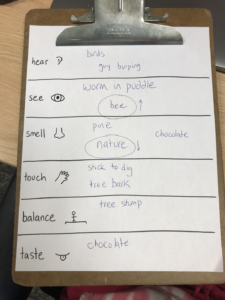
We went for a walk and noticed a lot of things. The child had an easier time noticing some types of sensory input that were more concrete, especially what they could see. They named several things that they could see. With a lot of adult direction, they were also able to name other senses, especially when I narrowed it down to just one sense for them. It turned out that having the whole list going at once was too open-ended, but if I said, “Ooh, what can we smell out here?” then they could answer that as a more direct question.
They had absolutely no interest in writing, even with my silly pen. I let that one go immediately! I became the scribe.
For awhile, they got very interested in using a stick to dig in the dirt, and then using the stick to rescue a worm who was stuck in a puddle. We took a break to dig for a few minutes.
My verbal explanation about how “balance” is a sense that most people don’t know about wasn’t very interesting to them. They were interested in the action aspect of climbing up on a tree stump and balancing, but I could practically see my words becoming “blah blah blah”s as they entered the child’s ears. 🙂
We ran out of time to actually make it into an app diary page, so I did that on my own time (both as an example for this page, and as an example for the child to show them the next time). So the app diary page attached to this is entirely made by me — not by a child! I just translated the information that we had written down collaboratively into stickers and text and doodles on the app to hopefully interest them next time. (The app is called DiaryZapp.)
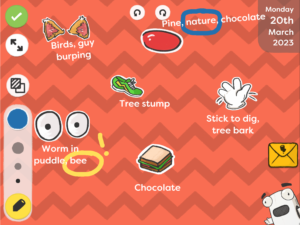
We did get a chance to reflect on the one thing that the child felt raised their energy the most (seeing a bee!) and the one thing the child felt lowered their energy the most (“smelling nature”). I thought these were really interesting answers and I told the child so! Sometimes kids instinctually believe that “up is good/down is bad” but here was an example of how their energy went “up” when they were scared and running away from a bee. And I related “smelling nature” to taking a deep breath (which of course helps when it smells pleasant outside!)

